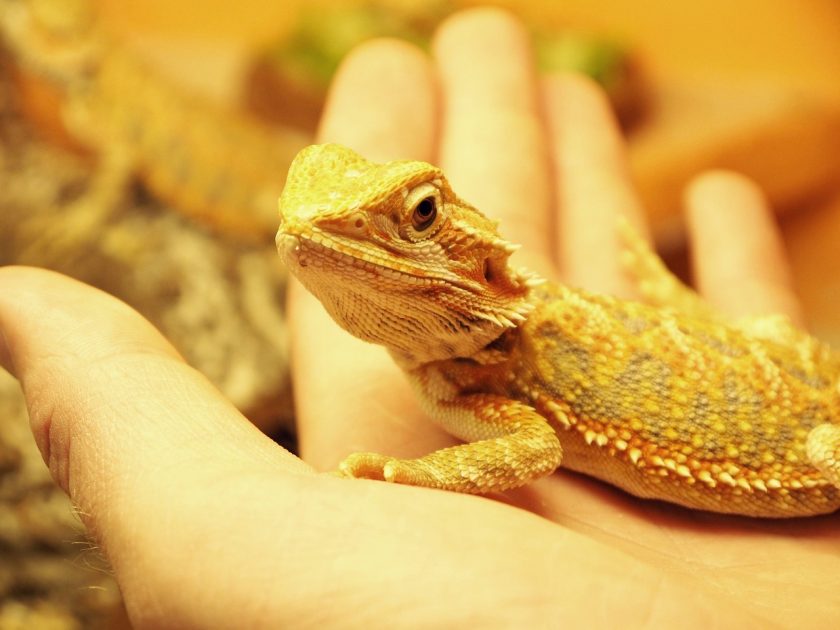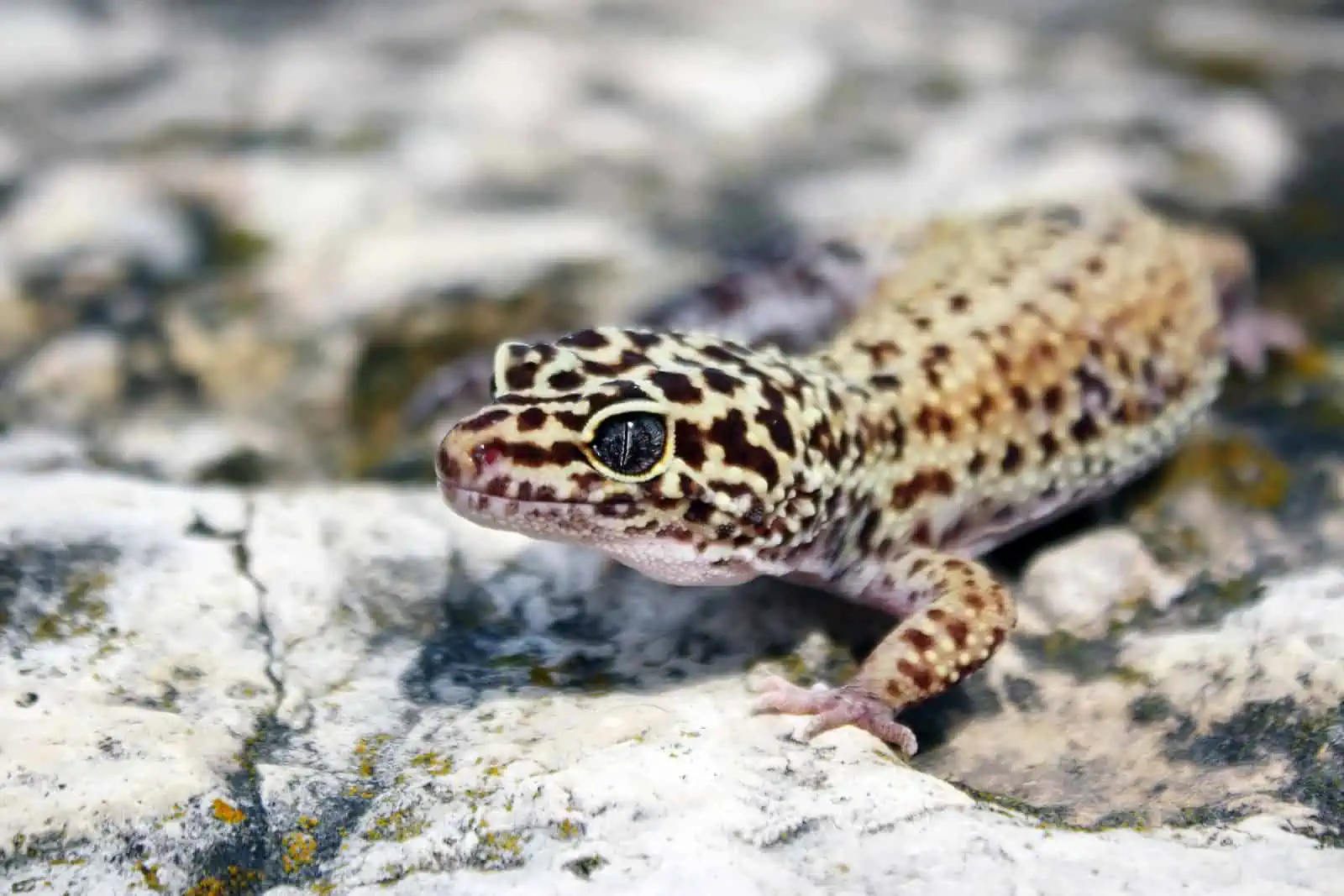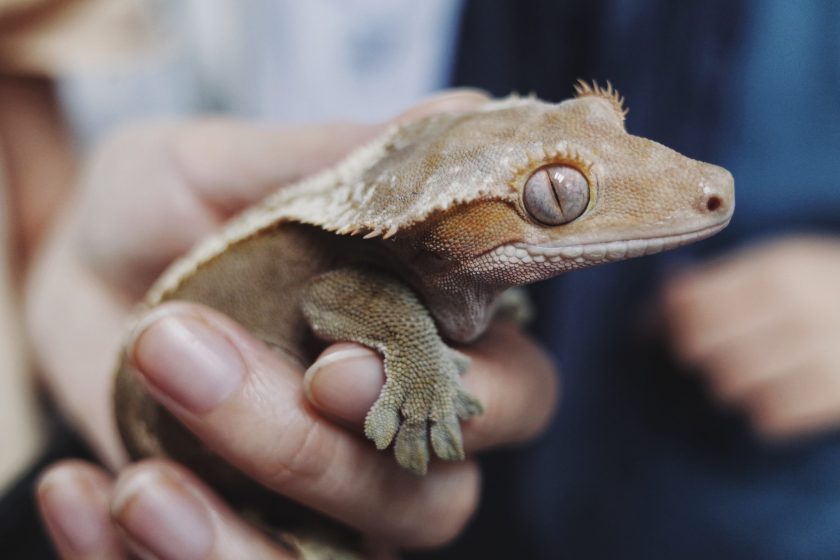What type of reptile lover are you? Do you enjoy setting up the perfect living space and watching from afar, or do you prefer to interact with them more closely? A lot of lizards prefer to be left alone, but some enjoy hanging out with humans. Not all lizards are the same with handling; some are a bit shy and like handling only now and then, while others are more into regular handling.
Handling is more than just touching–it’s about forming a deeper connection with your lizard friend. And it’s super important to handle them the right way to keep them healthy and happy. This includes:
- Understanding Your Lizard: Figure out their mood and how comfortable they are.
- Approaching: Go slow and think about using protective gear like gloves.
- Picking Up: Make sure to support their whole body.
- Holding: Be gentle and keep them close to the ground.
- Safety Measures: Pay attention to cleanliness and watch how the lizard acts.
- Releasing: Place them back in a safe and cozy spot.
Stay tuned to find out which lizard is the perfect buddy for your lifestyle and how to build a strong bond through thoughtful handling.
Top 9 Best Handleable Reptiles
Lizards come in all sorts of shapes and sizes, and many are great for handling. It really depends on what you like as a reptile fan. I’m going to talk about nine lizard types that are friendly and like being around people.
1. Bearded Dragon
| Attribute | Detail |
| Scientific Name | Pogona vitticeps |
| Adult Size | 16 to 24 inches |
| Adult Weight | 300 to 500 grams |
| Lifespan | 8 – 10 years |
Bearded dragons have a mix of qualities that make them great for handling. These lizards are calm by nature, so they don’t get stressed easily around people. Many seem to actually like being handled, which isn’t common for reptiles. Their friendly nature, along with their size, which isn’t too big or small, makes them less scary and easy to handle – especially for those new to lizards. Bearded Dragons hardly ever get aggressive, so there’s a low chance of them biting.
When it comes to their activity, bearded dragons are awake during the day and sleep at night, just like people. This means they’re active when we are, giving us more chances to interact with them. They have a moderate level of activity. They’re fun to watch and play with, but they’re not too hyper. And their calmness makes them easy to handle without much trouble.
2. Leopard Gecko
| Characteristic | Detail |
| Scientific Name | Eublepharis macularius |
| Adult Size | 7-11 inches |
| Adult Weight | 50-80 grams |
| Lifespan | 15-20 years |
Leopard Geckos are known for being really calm and easygoing. They’re pretty easy to handle, which makes them a great choice for people who are new to taking care of reptiles. This is a big plus, as they don’t need as much care as many other lizard types. These geckos are crepuscular, meaning they are most active during dawn and dusk. Watching them during these times is fun – as they’re busy exploring and doing things that keep them healthy and happy.
When it comes to biting, Leopard Geckos are usually very gentle. They don’t usually bite unless they feel scared or threatened, but it’s important to watch for signs that they’re stressed or nervous. This could be things like:
- Waving their tail
- Breathing fast
- Or getting into a defensive position.
These signs might mean they could bite. Generally, female leopard geckos are less likely to be aggressive than males, and if they bite, their teeth are sharp enough to pierce the skin. While it’s not usually dangerous, it can hurt.
3. Ackie Monitor
| Characteristic | Detail |
| Scientific Name | Varanus acanthurus |
| Adult Size | 24 inches |
| Adult Weight | 141 to 340 grams |
| Lifespan | 15-20 years |
Ackie Monitors are really interesting pets because they’re curious and active. They’re super smart and can remember their owners and what has happened in the past, which is important for building trust.
- If you’re patient and careful when handling them, Ackie Monitors can become friendly and fun pets.
- But, if you rush things, they might get nervous and jumpy, so it’s best to go at a pace they’re okay with.
Regarding biting, Ackie Monitors are more likely to bite other Ackies, usually over space or during mating season, rather than biting people. And they only bite humans as a last option, mostly when they’re really scared and feel like they must defend themselves. If they do bite a person, it usually doesn’t cause much harm.
Ackie Monitors sometimes whip their tails as a way to protect themselves, which shows they are scared, and this shows why it’s so important to understand how they communicate with their body to make sure they feel safe and relaxed when you’re handling them.
4. Crested Gecko
| Characteristic | Detail |
| Scientific Name | Correlophus ciliatus |
| Adult Size | 8 – 10 inches |
| Adult Weight | 42-45 grams |
| Lifespan | 10-15 years |
Crested Geckos are renowned for their pleasant and docile temperaments. They’re not too aggressive or territorial, making them a great choice for people just starting out with reptile care. Usually, they have a laid-back personality and aren’t likely to bite or act aggressively but, like all animals, each Crested Gecko can have its own unique personality. But some might be a bit shy or more active than others.
When it comes to handling them – Crested Geckos are pretty adaptable, and they can get used to a routine and are fairly easy to handle. However, it’s best to handle them only sometimes to keep them from getting stressed.
Crested Geckos are curious when they’re being handled; they often jump or try to climb, which is normal for them, but if they get too stressed or if they’re not handled right, they might drop their tail. This is called autotomy. And they can survive without their tail, but careful handling is important to prevent this from happening.
5. African Fat-Tailed Gecko
| Characteristic | Details |
| Scientific Name | Hemitheconyx caudicinctus |
| Adult Size | 3.9-11.8 Inches |
| Adult Weight | 40-65 grams |
| Lifespan | 15–20 years |
African Fat-Tailed Geckos are known for being calm, which makes them great pets to handle. They’re gentle and not very likely to scratch or bite, which is especially good for people new to having geckos as pets. These geckos usually get used to where they live pretty easily, and once they feel at home, they’re okay with being handled. It’s important to be patient and gentle with them. Often, they’ll even walk onto your hand on their own.
One interesting thing about them is that they are active at night. During the day, they mostly like to chill out or sit in the sun in their cages. Unlike some more active lizards, this makes them easier to handle in the daytime. They’re more lively at night, showing hunting behaviors when they eat, which can be interesting to watch.
6. Blue Tongue Skink
| Characteristic | Details |
| Scientific Name | Tiliqua |
| Adult Size | Up to 23.5 inches |
| Adult Weight | 283-510 grams |
| Lifespan | Up to 20 years |
Blue Tongue Skinks are friendly and easygoing, making them a great choice for beginners and experienced and beginner lizard lovers. Their calm nature is one of the things that pet owners like the most. And these skinks usually don’t get aggressive, they often seem to like being around people, enjoying gentle touches such as being gently scratched under the chin or on the head.
Handling these lizards takes a bit of patience. They need time to get used to their new home and their owner, but once they’re comfortable, they generally don’t mind being handled and might even like it. It’s best to start with short handling times and then slowly do it more as the skink gets used to it.
Even though Blue Tongue Skinks have blunt teeth – they might still bite if scared or surprised. But this doesn’t happen very often. They are curious and friendly, and they don’t move around too much when they’re being handled. This makes them a good option for people who want close interactions with their pet lizard.
7. Chinese Water Dragon
| Characteristic | Detail |
| Scientific Name | Physignathus cocincinus |
| Adult Size | 2-3 feet (females are smaller) |
| Adult Weight | Up to 600 grams |
| Lifespan | 10 to 15 years |
Chinese Water Dragons are really friendly and like being around people. They’re usually nicer than iguanas and enjoy being handled. And if you interact with them a lot from when they are young, they get used to people and stay calm. But, if they get scared or feel threatened – they might bite or whip their tail. Luckily, this doesn’t happen often and usually only when they’re stressed or in pain.
These lizards are super active and love moving around, climbing, and swimming. Because they’re so active, they don’t get stressed easily when you handle them, but you need to be gentle and consistent. Their love for activity also means they need a big space to explore and move around a lot.
8. Uromastyx
| Characteristic | Detail |
| Scientific Name | Uromastyx spp. |
| Adult Size in Inches | 10-36 inches |
| Adult Weight in Grams | 100-2000 grams |
| Lifespan | Up to 25 years |
Uromastyx lizards are fascinating creatures known for their eye-catching colors and distinctive spiny tails. They live in the tough environments of Africa and the Middle East. One cool aspect of their appearance is their color-changing ability, which helps them regulate their body temperature with the changing seasons. When it gets cooler, they darken to soak up more sunlight, and in the heat, they switch to lighter colors.
Their defense mechanism against predators is using a muscular, spiked tail wielded with remarkable speed and with the ability to wedge themselves into burrows to evade extraction. When it comes to handling, Uromastyx lizards might start off a bit shy, but give them some time. Once they get comfortable in their new environment, they usually become quite gentle and might even enjoy a little friendly interaction.
For anyone thinking about bringing a Uromastyx lizard into their home, it’s super important to go for captive-bred ones. This helps make sure we’re not harming their wild populations, which can suffer from unsustainable capture practices.
9. Gargoyle Gecko
| Characteristic | Detail |
| Scientific Name | Rhacodactylus auriculatus |
| Adult Size in Inches | 8-10 inches |
| Adult Weight in Grams | 60-70 grams |
| Lifespan | 15-20 years |
Gargoyle Geckos get their name from the horn-like protrusions on their heads, similar to the mythical creatures found in Gothic architecture. This feature and their ability to shift colors from shades of gray to vibrant oranges or reds make them a visually striking species within the reptile community. They catch the eye of many reptile lovers because of their appearance and the interesting color changes they undergo.
These geckos are known for their calm nature, making them good pets, even those new to reptile care. They handle human interaction quite well. It’s necessary to be gentle and not handle them too often to prevent stress.
Gargoyle Geckos can live up to 20 years with the right care, offering long-term companionship. These geckos can thrive for those ready to provide a habitat that resembles their natural setting, ensuring a happy and engaging environment.
Do Pet Lizards Like To Cuddle?
Usually, lizards aren’t as affectionate as animals like dogs or cats, but that doesn’t mean they never enjoy cuddling. With the right training and getting used to people, some lizards can like being close to their owners.
- For example: Bearded Dragons are often chosen by people new to having pet lizards. And they seem to be okay with being held and might even like it. They’ve been seen getting cozy in their owner’s hands as if they’re looking for warmth and contact.
- Tegus are another kind of lizard that can show affection. Known for their dog-like demeanor, Tegus may exhibit what can be interpreted as cuddling behavior with their owners under the right conditions.
This shows that if you understand what lizards need and treat them correctly, they can form a close bond with the people who care for them.
How To Properly Handle Your Lizard
As someone who loves reptiles, I really understand how important it is to handle lizards the right way. It’s not just about keeping them safe. It’s also about making a good bond and trust with your lizard friend. Here are some important steps to make sure you handle your lizard correctly.
1. Understanding Your Lizard
- Know the Species: It’s crucial to learn about your lizard’s type – find out what they need for handling, how they behave, and what risks there might be.
- Observation: Watch your lizard from a distance first. This helps you see how they’re feeling and if they’re comfortable.
2. Approaching Your Lizard
- Protective Gear: Wear gloves if your lizard has sharp claws or teeth. Or if you’re not comfortable touching them directly.
- Approach Slowly: Go towards your lizard slowly and calmly, as quick movements can scare them and make them stressed or want to run away.
3. Picking Up Your Lizard
Support the Body: When you pick up your lizard, hold their whole body, including their legs; this keeps them from getting hurt. Don’t lift them by the tail.
Gentle Handling: Be gentle when you hold your lizard, and don’t squeeze them – as they’re fragile and can get hurt easily.
4. Holding Your Lizard
- Use Tools if Needed: If you’re nervous, use a soft towel or gloves to gently handle your lizard.
- Close-to-Ground Handling: Hold your lizard near the ground. This way, if they try to get away, they won’t get hurt from falling.
5. Safety Measures
- Washing Hands: Always wash your hands before and after you handle your lizard, as this stops bacteria like Salmonella from spreading.
- Read Body Language: Look for signs that your lizard is stressed, like tail waving or making huffing sounds. And if you see these, stop handling them.
6. Releasing
- Putting Down with Care: When it’s time to put your lizard back, do it gently. Make sure they’re in a safe and cozy spot.
To Sum It Up
As you delve into the world of reptiles, understanding which lizards thrive with handling is key – as this can make your experience with them much more enjoyable. Remember, picking a lizard that likes how you handle them can improve your time together. And it also helps keep your pet happy and healthy. The key to a great relationship with these interesting animals is to:
- Respect them
- Be patient
- And understand what they need.
Are you thinking about getting one of these lizards that are easy to handle? Which one do you think would fit best with how you live and what you’re looking for? Most importantly, how do you plan to bond strongly with your new lizard friend? Share your thoughts and questions in the comments.











